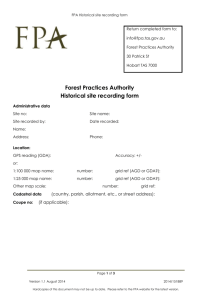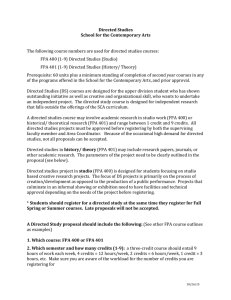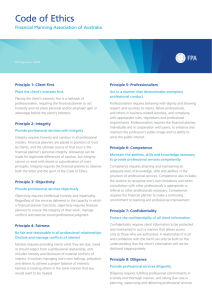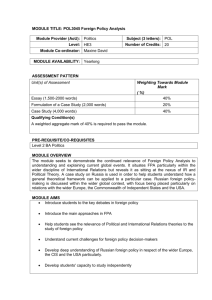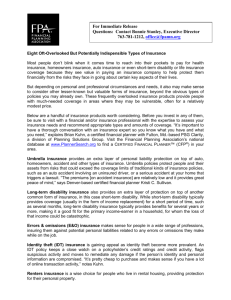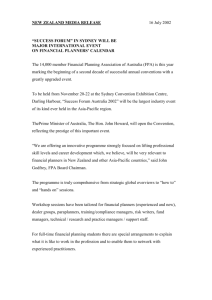THE LILLY LEDBETTER FAIR PAY ACT’S RETROACTIVITY PROVISION: IS IT
advertisement
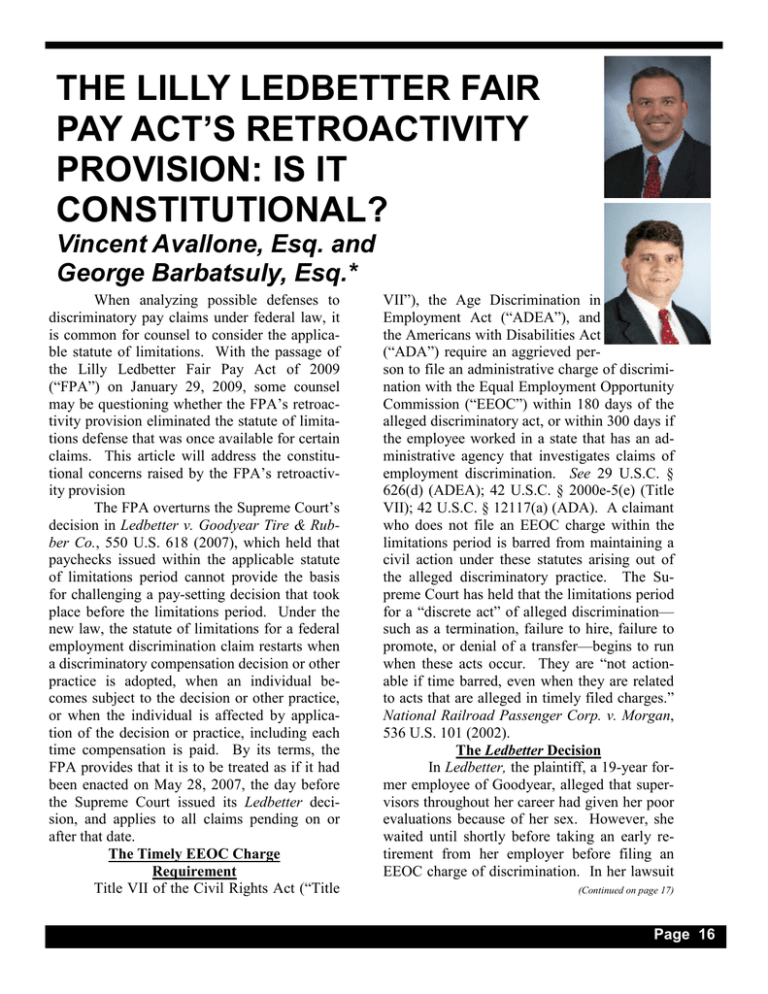
THE LILLY LEDBETTER FAIR PAY ACT’S RETROACTIVITY PROVISION: IS IT CONSTITUTIONAL? Vincent Avallone, Esq. and George Barbatsuly, Esq.* When analyzing possible defenses to discriminatory pay claims under federal law, it is common for counsel to consider the applicable statute of limitations. With the passage of the Lilly Ledbetter Fair Pay Act of 2009 (“FPA”) on January 29, 2009, some counsel may be questioning whether the FPA’s retroactivity provision eliminated the statute of limitations defense that was once available for certain claims. This article will address the constitutional concerns raised by the FPA’s retroactivity provision The FPA overturns the Supreme Court’s decision in Ledbetter v. Goodyear Tire & Rubber Co., 550 U.S. 618 (2007), which held that paychecks issued within the applicable statute of limitations period cannot provide the basis for challenging a pay-setting decision that took place before the limitations period. Under the new law, the statute of limitations for a federal employment discrimination claim restarts when a discriminatory compensation decision or other practice is adopted, when an individual becomes subject to the decision or other practice, or when the individual is affected by application of the decision or practice, including each time compensation is paid. By its terms, the FPA provides that it is to be treated as if it had been enacted on May 28, 2007, the day before the Supreme Court issued its Ledbetter decision, and applies to all claims pending on or after that date. The Timely EEOC Charge Requirement Title VII of the Civil Rights Act (“Title VII”), the Age Discrimination in Employment Act (“ADEA”), and the Americans with Disabilities Act (“ADA”) require an aggrieved person to file an administrative charge of discrimination with the Equal Employment Opportunity Commission (“EEOC”) within 180 days of the alleged discriminatory act, or within 300 days if the employee worked in a state that has an administrative agency that investigates claims of employment discrimination. See 29 U.S.C. § 626(d) (ADEA); 42 U.S.C. § 2000e-5(e) (Title VII); 42 U.S.C. § 12117(a) (ADA). A claimant who does not file an EEOC charge within the limitations period is barred from maintaining a civil action under these statutes arising out of the alleged discriminatory practice. The Supreme Court has held that the limitations period for a “discrete act” of alleged discrimination— such as a termination, failure to hire, failure to promote, or denial of a transfer—begins to run when these acts occur. They are “not actionable if time barred, even when they are related to acts that are alleged in timely filed charges.” National Railroad Passenger Corp. v. Morgan, 536 U.S. 101 (2002). The Ledbetter Decision In Ledbetter, the plaintiff, a 19-year former employee of Goodyear, alleged that supervisors throughout her career had given her poor evaluations because of her sex. However, she waited until shortly before taking an early retirement from her employer before filing an EEOC charge of discrimination. In her lawsuit (Continued on page 17) Page 16 FAIR PAY ACT (Continued from page 16) filed after her retirement, she alleged, among other claims, pay discrimination under Title VII. She claimed that long-past pay decisions continued to affect her pay throughout her career, and by the end of her employment she was paid significantly less than her male counterparts. Following a trial, the district court awarded Ledbetter back-pay and damages, but the Eleventh Circuit reversed, holding that her Title VII claim was time barred. The Eleventh Circuit reasoned that her claim could not be maintained because no discriminatory acts took place in the 180 days prior to the filing of her charge. The Supreme Court affirmed in a 5-4 decision. The majority held that a discriminatory pay-setting decision constitutes a “discrete act” of employment discrimination, and the time for filing an EEOC charge begins to run when that pay-setting decision occurs. Ledbetter, 127 S. Ct. at 2165. The Court distinguished its earlier decision in Bazemore v. Friday, 478 U.S. 385 (1986), which involved an action against a state agency that had segregated employees according to their race, with white employees receiving more pay. In that context, the Bazemore Court stated, “[e]ach week’s paycheck that delivers less to a black than to a similarly situated white is a wrong actionable under Title VII.” 478 U.S. at 395. The Ledbetter Court rejected the plaintiff’s claim that Bazemore called for a “paycheck-accrual” rule. The Court distinguished the intentional carrying forward of a discriminatory pay structure at issue in Bazemore from a long-past discriminatory pay-setting decision with continuing adverse effects at issue in Ledbetter. 127 S. Ct. at 2174. In the latter situation, the Court held, paychecks issued during the limitations period cannot provide the basis for challenging an allegedly discriminatory pay-setting decision that took place before the statutory period. Ledbetter, 127 S. Ct. at 2169. Congressional Response: the FPA Page 17 Congress found that the Ledbetter decision “unduly restrict[s] the time period in which victims of discrimination can challenge and recover for discriminatory compensatory decisions and other practices,” and therefore, the FPA amends Title VII, the ADA, the ADEA, and the Rehabilitation Act of 1973. Pub. L. No. 111-2, 123 Stat. 5 (2009). Under the new law, an “unlawful employment practice” occurs when a “discriminatory compensation decision or other practice” is adopted, when an individual becomes subject to the decision or “other practice,” or when the individual is “affected” by application of the decision or practice, including each time compensation is paid. Pub. L. No. 111-2, § 3-4, 123 Stat. at 5-6. The FPA allows an aggrieved individual to recover back pay for up to two years preceding the filing of an EEOC charge. Id. Retroactive Effect A unique feature of the new law is its retroactivity provision. In general, courts will not construe statutes burdening private rights retroactively unless Congress clearly intends this result. Landgraf v. USI Film Products, 511 U.S. 244 (1994). This presumption is rooted in “the unfairness of imposing new burdens on persons after the fact.” Landgraf, 511 U.S. at 270. This presumption can be overcome where “Congress has expressly prescribed the statute’s proper reach.” Id. at 280. The FPA appears calculated to rebut the presumption against retroactivity. By its terms, the FPA takes effect “as if enacted on May 28, 2007” and applies “to all claims of discrimination in compensation ... that are pending on or after that date.” Pub. L. No. 111-2, § 6, 123 Stat. at 7. Retroactive Retroactivity? Questions remain, however, as to the scope of Congress’s intent. Did Congress, in providing that the FPA takes effect “as if enacted on May 28, 2007,” merely provide that alleged discriminatory conduct or EEOC charges filed before May 28, 2007 remain sub(Continued on page 18) FAIR PAY ACT (Continued from page 17) ject to the Ledbetter decision and not the FPA? Or, did Congress more broadly intend to allow claims based on conduct and EEOC charges filed before this date? The legislative history suggests that Congress intended a broad application. The House Report accompanying the law as originally introduced states that Congress chose a May 28, 2007 effective date to “ensure[] that no pending or future claims, not yet finally adjudicated, are affected by the Ledbetter ruling,” which was issued on May 29, 2007. H.R. Rep. No. 110-237 at 19, 110th Cong., 2d Sess. (2007). Under this broad approach, courts would first need to treat the statute as if it had been the law on May 28, 2007. From that date, courts would then need to apply the FPA to conduct and EEOC charges filed prior to May 28, 2007. In essence, such an approach calls for a form of retroactive retroactivity. The few cases that have considered the retroactive reach of the FPA to date appear to have adopted this broad form of retroactivity and allowed suits to proceed based on alleged discriminatory conduct that occurred, and EEOC charges filed, long before May 28, 2007. See, e.g., Rehman v. State Univ. of N.Y., Civ. No. 080326, 2009 U.S. Dist. LEXIS 12897, *14-15 (E.D.N.Y. Feb. 6, 2009) (allowing plaintiff to proceed on wage discrimination claims based on actions as early as April 13, 2005, two years before the filing of his EEOC charge on April 13, 2007); Vuong v. New York Life Ins. Co., Civ No. 03-1075, 2009 U.S. Dist. LEXIS 9320 (S.D.N.Y. Feb. 6, 2009) (allowing plaintiff to proceed on compensation discrimination claim based on pay allocation decision that occurred in February 1998, where EEOC charge was filed on August 2, 2002); Gilmore v. Macy’s Retail Holdings, Civ. No. 06-3020, 2009 U.S. Dist. LEXIS 7894 (D.N.J. Feb. 4, 2009) (acting on own motion mid-trial to hold that FPA allows plaintiff to pursue pay discrimination claim under Title VII based upon paychecks issued as early as July 7, 2003, two years before she filed her EEOC charge on July 7, 2005). Separation of Powers Concerns This broad retroactivity raises a number of constitutional questions. Separation of powers is one such concern. Can Congress, through retroactive legislation, declare that the law was something other than what the Supreme Court said it was when it decided a case interpreting that law? Such legislation would appear to run contrary to the long-settled rule that it is “emphatically the province and duty of the judicial department to say what the law is.” Marbury v. Madison, 5 U.S. 137, 1 Cranch 137, 177, 2 L. Ed. 60 (1803). The Supreme Court provided a partial answer to this question in Plaut v. Spendthrift Farm Inc., 514 U.S. 211 (1995). There, the statute at issue overruled the Supreme Court’s prior holding as to the statute of limitations for certain private causes of action under the Securities Exchange Act. The Court held that such legislation violated separation of powers to the extent that it directed the reopening of final judgments in suits that had been dismissed with prejudice by virtue of the Court’s prior holding. Plaut, 514 U.S. at 217. The Court stated, “[h]aving achieved finality ..., a judicial decision becomes the last word of the judicial department with regard to a particular case or controversy, and Congress may not declare by retroactive legislation that the law applicable to that very case was something other than what the courts said it was.” Id. at 227 (emphasis in original). Based on Plaut, the FPA’s retroactivity provision appears to violate separation of powers to the extent that it requires courts to reopen suits dismissed with prejudice, and no longer on appeal, as of the FPA’s enactment on January 29, 2009. This is so even if the suits had been pending as of the statute’s stated effective date of May 28, 2007. Whether separation of powers bars retroactive application of the FPA to pending cases is less clear. The Plaut Court stated that separation of powers would not necessarily be offended by applying a new statute of limitations (Continued on page 19) Page 18 FAIR PAY ACT (Continued from page 18) to a pending case, since “[w]hen a new law makes clear that it is retroactive, an appellate court must apply that law in reviewing judgments still on appeal that were rendered before the law was enacted and must alter the outcome accordingly.” Plaut, 514 U.S. at 226-27. On the other hand, separation of powers would be offended if Congress attempted to prescribe rules of decision for pending cases. See United States v. Klein, 80 U.S. (13 Wall.) 128 (1871). This prohibition means that Congress may “compel changes in law, not findings or results under old law.” Robertson v. Seattle Audobon Soc’y, 503 U.S. 429, 438 (1992). The Plaut Court explained, however, that the Klein prohibition “does not take hold when Congress amends applicable law.” Thus, Klein was no bar to the retroactive application of a new statute of limitations to pending cases. Plaut, 514 U.S. at 218. The FPA’s retroactivity provision is arguably distinguishable from the statute at issue in Plaut. It does not merely lengthen a preexisting statute of limitations but purports to dictate, retroactively, the circumstances under which causes of actions accrue under the statutes it amends. It is conceivable that a court may conclude that in so providing, the FPA impermissibly seeks to dictate the outcome under prior law in pending cases. Robertson, 503 U.S. at 438. Absent case law directly on point, however, the viability of a Klein-based separation of powers challenge to the FPA as applied to pending cases remains uncertain. Fundamental Fairness Concerns The FPA’s retroactivity provision also implicates fundamental fairness principles embodied in other constitutional provisions because of its potential to revive claims that would otherwise be time-barred. Proponents of the FPA have argued that the law does nothing more than restore the paycheck-accrual rule set forth in Bazemore. H.R. Rep. No. 110–237, at 6, 11-13 (Statement and Committee Views). Opponents have countered that before Ledbetter, “federal courts had come to vastly differing conclusions Page 19 about whether and how the paycheck rule was the proper application of law.” Id. at 38 (Minority Views). Opponents have also noted that the FPA extends beyond pay-setting decisions and broadly applies to any “other practice” relating to discrimination in compensation. Id. at 41. The FPA does not define the term “other practice,” allowing for the possibility that otherwise time-barred discrete employment actions— such as denials of promotions, transfers, and hiring decisions—may be revived if they are alleged to have affected an individual’s compensation. Thus, the question remains—may Congress revive such time-barred claims, even in pending cases? Courts in a number of states have concluded that retroactive extensions of statutes of limitations violate state constitutional due process protections. See, e.g., Waller v. Pittsburgh Corning Corp., 742 F. Supp. 581, 583 (D. Kan. 1990) (“[m]ost of the state courts addressing the issue have held that legislation which attempts to revive claims that have been previously time barred impermissibly interferes with vested rights of the defendant, and thus violates due process”); M.E.H. v. L.H., 685 N.E. 2d 335, 339 (Ill. 1997) (due process clause of state constitution prevents legislature from reviving previously time-barred claims). This principle has not firmly caught on at the federal level. The Plaut Court, while declining to reach the issue, noted in dicta that a statute of limitations “can be extended, without violating the Due Process Clause, after the cause of the action arose and even after the statute itself has expired.” Plaut, 514 U.S. at 229 (citing Chase Securities Corp. v. Donaldson, 325 U.S. 304 (1945)). In Stogner v. California, 539 U.S. 607 (2003), the Supreme Court signaled that it might be receptive to a future fairness-based challenge to a retroactive extension of a statute of limitations. There, the Court held that a criminal statute of limitations in sexual abuse cases enacted after expiration of a previously applicable limitations period violated the Ex Post Facto Clause (Continued on page 20) FAIR PAY ACT (Continued from page 19) when applied to revive a time-barred prosecution. 539 U.S. at 632-33. The Stogner Court reasoned that it would be unfair to allow the State to retroactively withdraw a defense to prosecution after it had already attached. Id. at 632. While Stogner arose in the criminal context, at least one justice has opined that the Ex Post Facto Clause on which Stogner relied should apply in the civil context. Eastern Enterprises v. Apfel, 524 U.S. 498, 538-39 (1998) (Thomas, J., concurring) (noting that he has “never been convinced of the soundness of this limitation” of the Ex Post Facto Clause to criminal cases, and in an appropriate case a retroactive civil law could be found unconstitutional under the Ex Post Facto Clause). At present, however, there appears to be limited judicial support for such a blanket extension to civil cases. Even absent a blanket rule, employers may have viable constitutional challenges where the FPA as applied to them produces extremely unfair retroactive results. In Eastern Enterprises, the Supreme Court considered a challenge under the Fifth Amendment’s Due Process and Takings Clauses to the Coal Industry Retiree Health Benefit Act of 1992 (Coal Act), 26 U.S.C. §§ 9701-9722, which retroactively imposed financial liability on a former employer to contribute funds to a coal industry retirement and health fund. The Coal Act purported to impose liability on the former employer for events as long as 35-years earlier, long after the employer had left the coal industry. A four-justice plurality found that this statute violated the Takings Clause as applied to the employer, in part, because it “placed a severe, disproportionate, and extremely retroactive burden” on the employer. Eastern Enterprises, 524 U.S. at 538. A fifth justice concluded that the “unprecedented scope” of the retroactivity provision as applied to the former employer violated the Due Process Clause. Id. at 549 (Kennedy J., concurring). Insofar as the FPA as applied to a particular case purports to resurrect claims that have long been time-barred, and for which key witnesses and evidence are no longer available, employers may have a basis for bringing a constitutional challenge under the Ex Post Facto, Takings, and/or Due Process clauses. Indeed, it is not hard to imagine in this day of employee mobility and changing workforces due to increases in productivity, outsourcing, or labor cost reductions, that an employer could be faced with a claim regarding an employee about which no present employee has any knowledge. Conclusion The FPA has made sweeping changes in the calculation of the statute of limitations for employment practices affecting compensation challenged under Title VII, the ADEA, and the ADA. In purporting to make these changes retroactive to May 28, 2007, and then, applicable to employment practices that arose well before that date, Congress has provided for a peculiar form of retroactive retroactivity. Under the new law, statutory claims that otherwise have long lapsed under the 180/300 day limitations period can now be revived by the FPA and made part of a new lawsuit. Such an approach raises a number of constitutional issues, including separation of powers concerns and fundamental fairness principles embodied in various other constitutional provisions. It remains to be seen whether employers will succeed in convincing the courts to impose constitutional limits to the FPA’s scope. * Mr. Avallone is a Member of the law firm of K&L Gates LLP and Mr. Barbatsuly is Of Counsel with the firm. The authors wish to thank K&L Gates associate Angela Kopolovich for her invaluable assistance in the preparation of this article. Page 20
